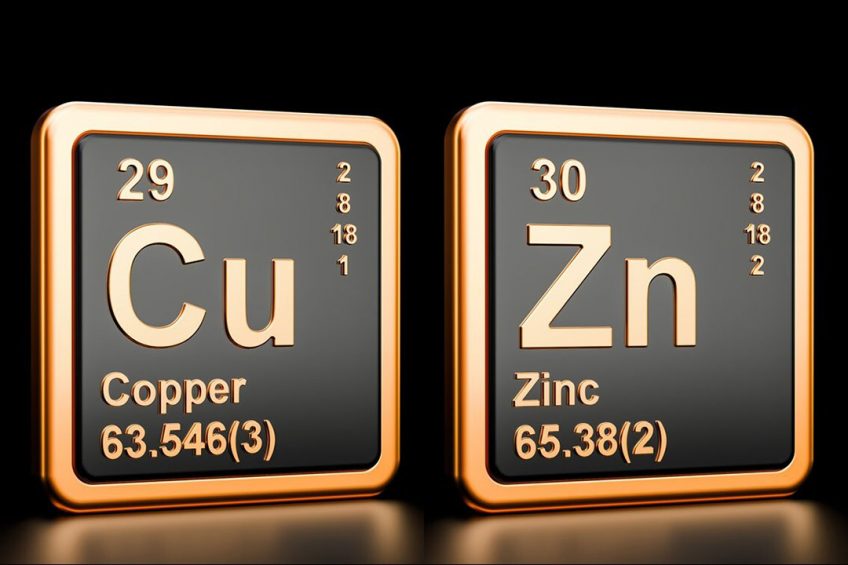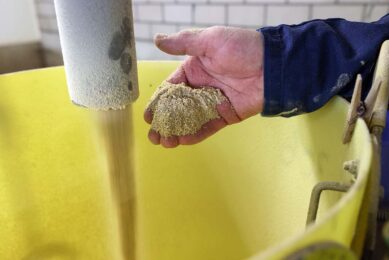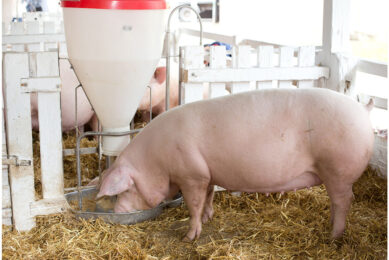Using alternative sources for copper and zinc in pig feed

A recent webinar touched upon the latest developments in supplying zinc and copper to weaner pigs.
Both zinc and copper are very important trace minerals in pig feed as they are required by pigs at relatively low levels for normal growth. When added at high dietary levels, copper (100 to 250 ppm) and zinc (2,000 to 3,000 ppm) can increase the growth performance of young pigs, but feeding too much could have consequences for the animal and the environment.
Zinc oxide and copper oxide have been the most recognisable sources for zinc and copper in the past, but as concerns about their environmental impact increases, feed manufacturers have searched for alternative sources.
Webinar to use of zinc and copper
During the webinar, organised by Feedéal and Animine and held on January 25, experts updated the industry on research into the use of the minerals. The webinar was held ahead of the annual French Swine Research Days (JRP) conference, which will take place digitally this year, February 1-4.
First up, Agathe Romeo, R&D manager, Animine, reported on her recent study to evaluate the impact of ZnO sources and doses on zootechnical performances in an enterotoxigenic Escherichia coli (ETEC) infection model in pigs.
She highlighted the importance of zinc oxide in pig feed to reduce diarrhoea and improve growth rates. She said that while the pharmacological dosage of zinc oxide of 3kg/tonne is commonly added to piglet feed post-weaning, there is a European ban coming in 2022 for this dosage. That, she said, highlighted the need for innovative solutions in weaning piglet feeds.
Free flowing powder of zinc
“In Animine we can provide a solution with HiZox which is a free flowing powder manufactured in Europe. It has a high concentration of 75% zinc, has high flowability, stability and high bioavailability,” said Romeo. She gave details of some experiments carried out on 72 Swiss Large White piglets weaned at 25 days that were fed a control feed using zinc oxide and one with the addition of this solution. In total, 4 parameters were measured to gain results including weight gain, feed intake, antibiotic administration and zinc in faeces.
The results showed that the powder was able to support the growth of piglets and avoid weight loss in very challenging conditions. “HiZox will be a valuable solution in piglet’s feed following the ban in 2022,” said Romeo. “It can reduce digestive disorders and antibiotic administration without a negative impact on the environment.”
 Potentiated zinc oxide in piglets
Potentiated zinc oxide in piglets
David Mathé, Animine sales director, outlined the benefits of potentiated zinc oxide in second stage piglets. His message was that the powder solution has enjoyed 10 years’ experience in the EU and that his company had conducted over 20 trials on the products in both laboratory and farm conditions. “Using HiZox is a good opportunity for customers to develop a solution to address the zinc oxide ban, based on a technically innovative product. It can be part of a feeding programme strategy from weaning to the end of the post-weaning phase improving intestinal health and final weight.”

Recently, the Real P3 podcast spoke to swine farmer Colin Twomey in Ireland about zinc in weaner diets
Use of copper to modulate microbiota
Next up was Dr Alessandra Monteiro, R&D manager, Animine, who spoke about the use of copper in piglets with a focus on microbiota modulation. In pig production, the bacteria modulation is one of the modes of action of copper in improving pig performance. Dr Monteiro outlined the benefits of CoRouge as a source of copper for pigs and detailed results of some trials using it in the feed.
One trial in Spain used a group of 128 piglets weaned at 28 days, taking place until they were 63 days old and weighing 19kg. Results showed that the pigs fed using the copper product were 9% heavier in bodyweight than those fed a ration based on a copper sulphate source. They also had a higher feed conversion ratio.
In conclusion, Dr Monteiro said: “Copper supplementation improves performance. The hypothesis that its effect is related to microbiota modulation resulting in the improvement of gut health was validated. Thus, a copper source with a stronger antibacterial activity might be more efficient to promote growth. A red source of copper oxide has shown improved pig performance and a stronger antibacterial effect than copper sulphate,” she added.
 Beheer
Beheer








 WP Admin
WP Admin  Bewerk bericht
Bewerk bericht